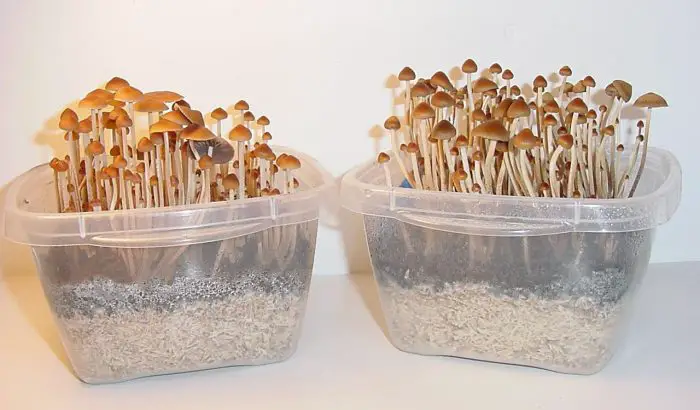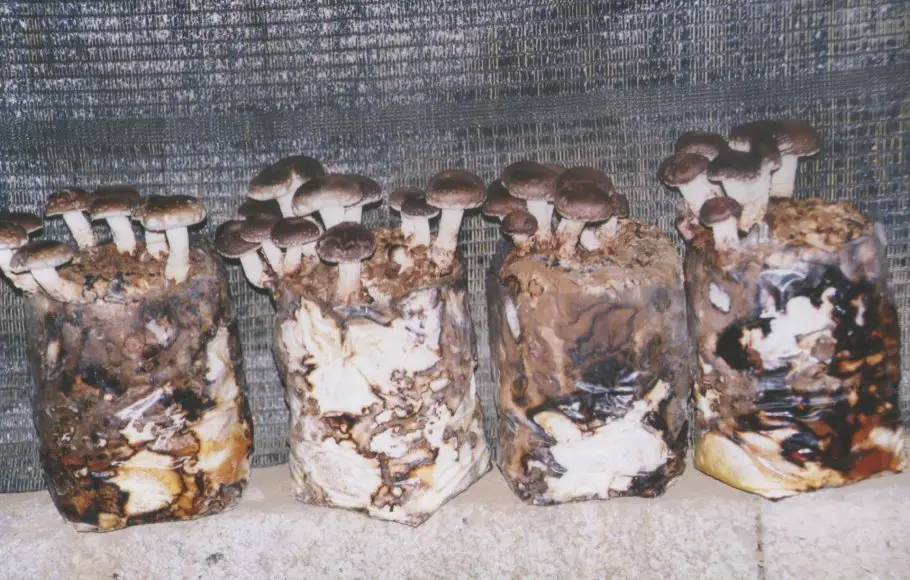Today, we’ll be discussing the simple and easy process of mushroom cloning.
The word “cloning” is associated for many with the famous sheep Dolly, grown from the cells of another sheep. Imagination immediately draws complex equipment, test tubes with a turbid liquid and parts of something living pulsing in them, laboratories in which the descendants of Frankenstein forge terrible plans.
In fact, cloning is nothing more than the removal of cells from one living organism and the removal of a new one from them. This new organism will be a genetically identical copy of the original a later-born twin, so to speak. As complicated and ethically questionable as this process is, in the case of fungi, cloning is a common and natural phenomenon. Many must have come across it: parts of mushrooms that were hand-picked and unsuitable for cooking thrown into the compost suddenly sprouted with new mushrooms. Let discuss how to clone mushrooms.

Table of Contents
Table of Contents
- how to clone mushrooms?
- Best method to Clone Mushroom (Personal Method)
- if you bury a mushroom will it grow?
how to clone mushrooms?
Cloning, which will be discussed below, is nothing more than the same process, taken under control.

So, you will need: washing Petri dishes with agar and, actually, mushrooms (one will be enough). Naturally, it is not worth leaving any honey mushrooms for cloning, but on the contrary, precisely those that have qualities that are important for you in this case. Usually, cloning is successful even when using mushrooms that have lain for a couple of days in the refrigerator, but it is best, of course, to use fresh material. Do you want to know What Climate Do Mushrooms Grow In?
Let’s go further. As soon as the “laboratory” is prepared (hermetically sealed box with glass in the lid, an incandescent lamp, and a simple lamp, in addition to closing holes for hands on the front wall) and the hands are thoroughly disinfected, the mushroom is placed in the box. In that order, and not vice versa!
Then the mushroom is torn into two parts. At the same time, you need to ensure that you do not touch the inner surface or its edges with your hands (even if you tried very hard when disinfecting, not-very-friendly bacteria may remain on your hands, which can easily nullify all your attempts to clone something). I do not advise you to cut the mushroom: since the outer surface of any mushroom is always more or less heavily polluted, bacteria can get deep into the mushroom body with a knife blade.
With a sharp, fire-sterilized, and air-cooled scalpel, we cut out as small a piece of tissue as possible from the middle of the mushroom body (in fact, it doesn’t matter where exactly this piece is cut from a hat or a leg, therefore, we will cut it out from where the mushroom is thickest) . It is very important to completely remove the tissue from inside the fungus.
Some mushrooms have a fibrous structure and therefore are difficult to cut. The easiest way in such cases is to first make two parallel cuts perpendicular to the stem. After that, small parts of the tissue are easily removed from the outside.
These particles are placed one by one in clean Petri dishes with agar.
That’s all. After three to five days, the mushroom threads will become visible, and very soon a full-fledged mycelium will develop from them, which will grow in the same way as a normal one obtained from spores.
I won’t repeat that everything related to inoculation must take place in a sterile environment. Always keep this in mind and one problem will be less. :)
If you are interesting to know about How To Grow Mycelium From Spore Prints?
Best method to Clone Mushroom (Personal Method)
First and foremost, it’s recommended to always start with a clone or spore to ensure that you are working with a pure culture. This will eliminate the guesswork about viability and save you time while you control the process.
When we talk about cloning, we don’t mean a complicated DNA procedure. Instead, we’re simply scraping alive tissue from the fungus under sterile conditions and then placing it in a sterile environment for growth. Mushrooms are composed of mycelium, so when we transfer a small piece of mushroom tissue, we transfer living cells that will continue to grow and share, giving us a genetic copy of the original.
This technique usually allows us to bring wild strains in and out of the woods and then successfully cultivate them. When transferring to a gas medium is required, almost full sterility is necessary.
We need to isolate pure mushroom mycelium from natural continents that are harmonious coexist in the natural environment. If cloned mushrooms are grown in premises and fungus, this process will be much easier. Just break the leg mushroom cut in half lengthwise to open a fabric that never exposed to dirty air.
When cloning wild mushrooms, the process as a whole is the same, but be prepared to do a series of transfers over the next few days to transplant me goals from mold and bacterial contamination. Always carry targets with them from the edge of mines. On the contrary, do not try to remove mold or bacteria from the cup, as it will lead to nothing good.
All that is required for successful copying is a paper towel, sap, isopropyl alcohol, an alcohol lighter lamp, or similar device, gloves, a scalpel, a cup with agar, and the mushroom you want to clone. Clones will often work much better than multi-spore inoculation.
The problem with cloning is that it remembers previous generations or generations and cannot be endlessly cloned and grown. Every time we clone, we clone all previous generations. This means that if you start with a clone from the store shelves and get 2 or even a fifth generation, then you yourself generate the cycle, and so on. You can always return to step back using material from master cups. In this way, keep counting your generation every time we grow mushrooms, we dramatically increase the number of cell divisions in this culture. When cells divide, telomeres become shorter. If telomeres get too short, the strain’s birth eventually the stamp reaches the point where it will not have the strength to bear fruit, it will be infected, and finally die. In between, there will be a decrease in biological effectiveness, and the strain will have more problems. Biological effectiveness, for example, blue shank, decreases from three to five and a half kilograms per 11-kilogram block if you have much less, your culture will degrade, not at all what you are looking for.
can you grow mushrooms from dried mushroom?
Yes, you can grow mushrooms from dried mushrooms, but it can be more difficult than growing them from fresh mushrooms or spores. This is because the spores on dried mushrooms may be less viable than those on fresh mushrooms, and the drying process may also damage or kill some of the spores.
if you bury a mushroom will it grow?
0 chances. While mushrooms do grow from underground mycelium, which is a network of thread-like fungal cells that can extend for miles, burying a mushroom cap or stem will not result in the growth of a new mushroom.
It was necessary to throw those champignons into a bucket of water. Soak during the day, then water the prepared bed (the spores will remain in the water). And maybe in a year, you will have mushrooms. (personal experience of champignons and honey mushrooms).
That’s all for now, folks. Thanks for visiting MushroomGrab, where we talk about mushrooms with love.
